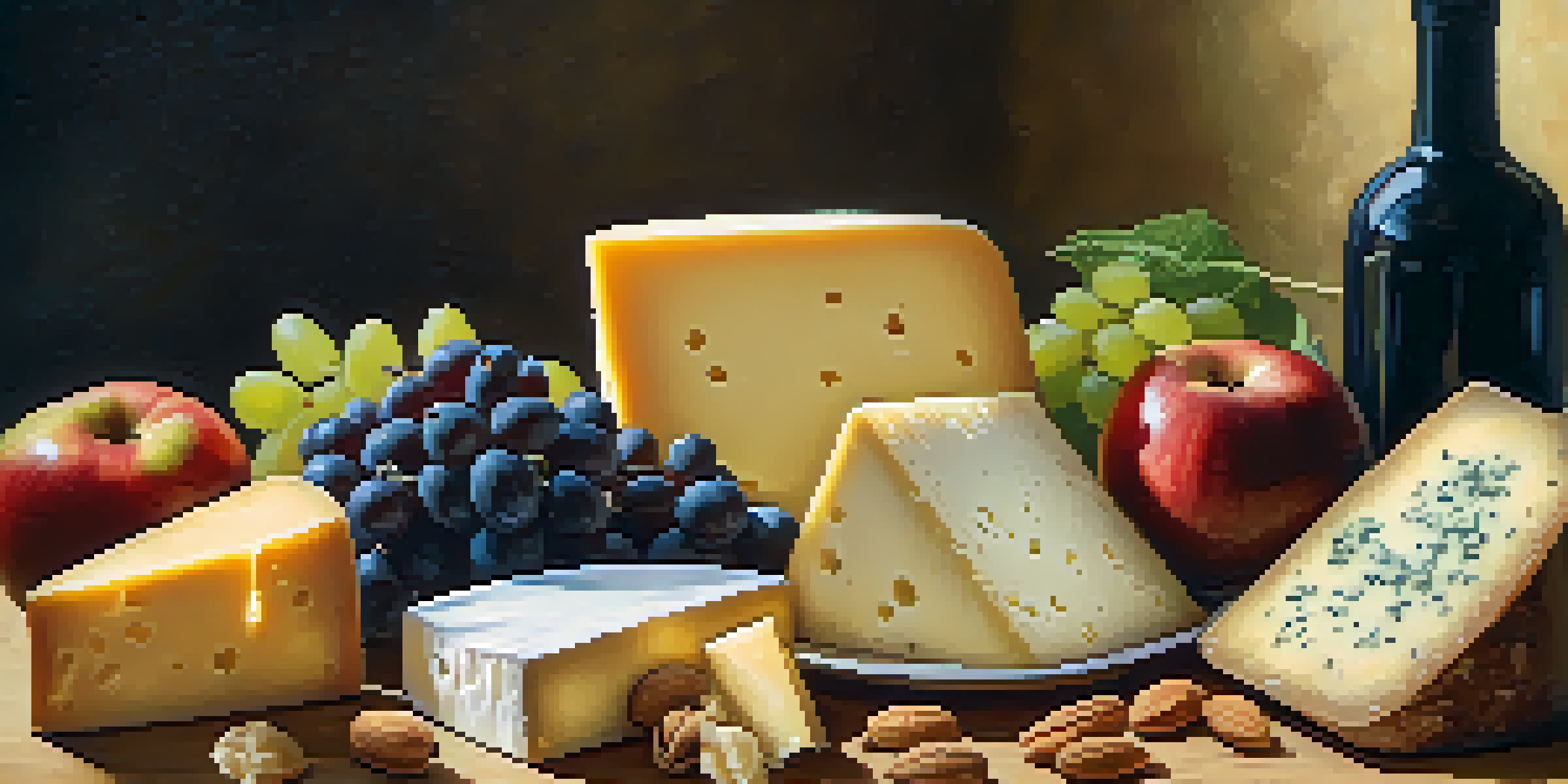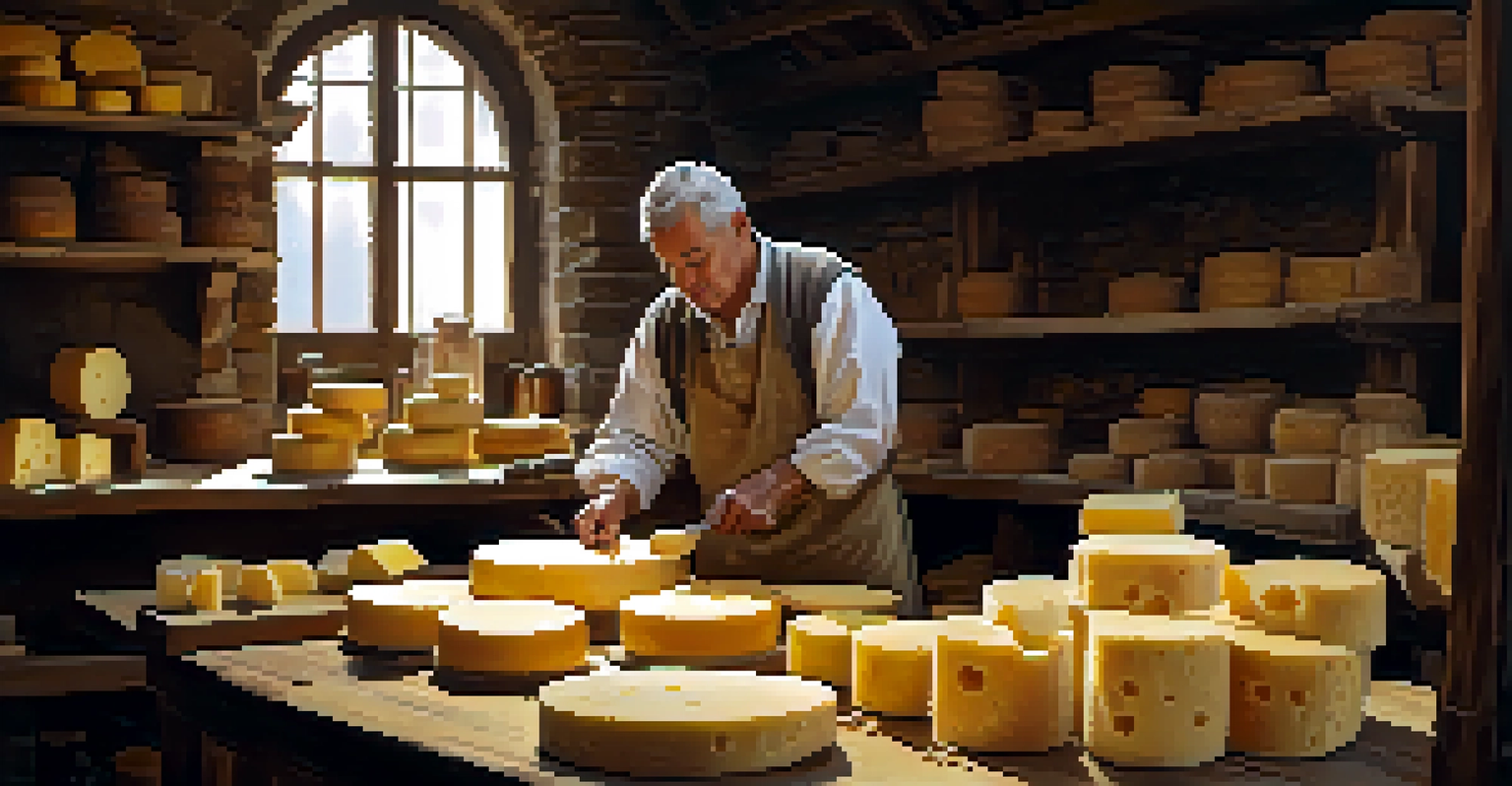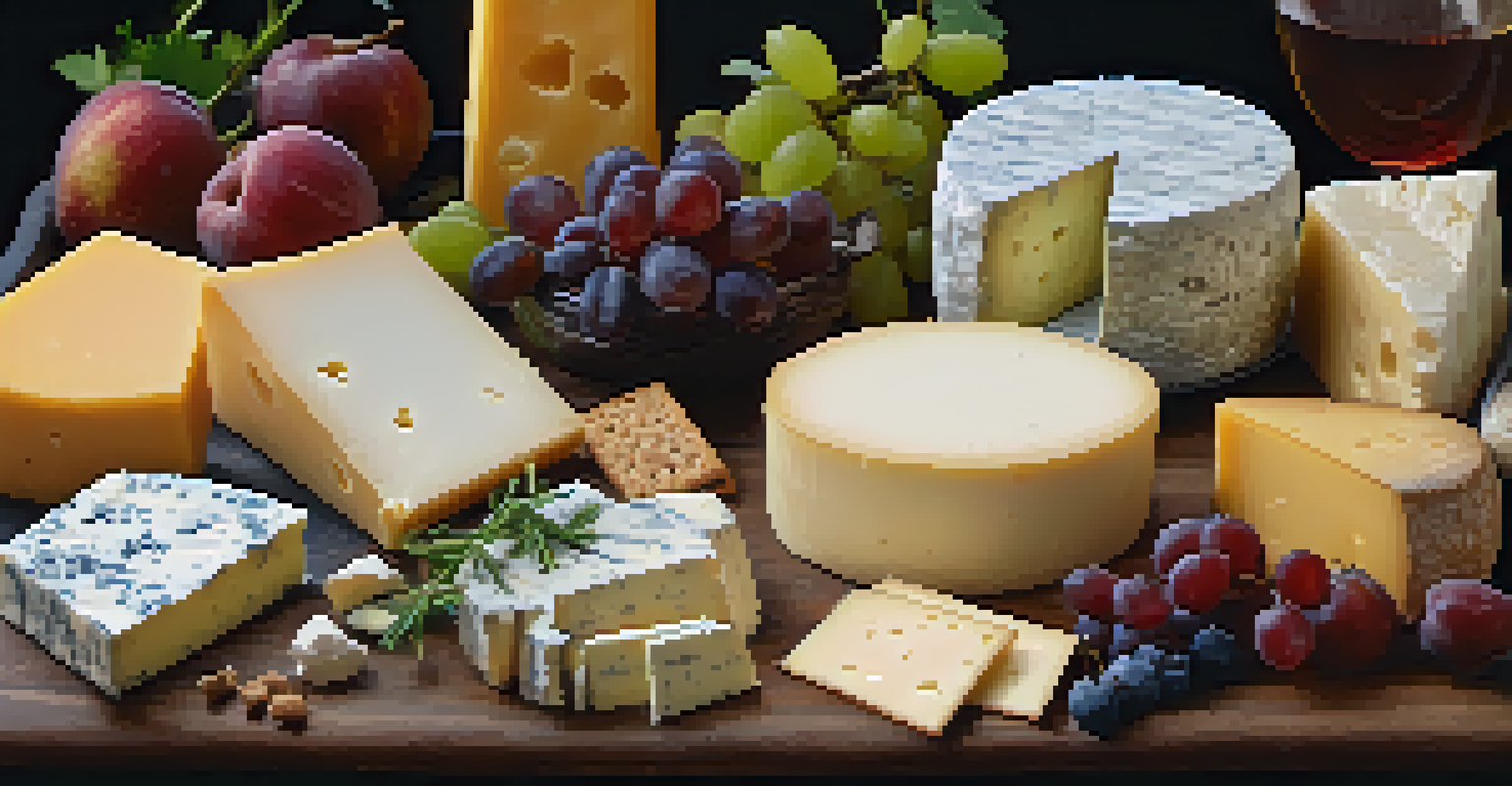Cheese Journeys: Sampling Artisan Cheeses Around the World

The Rich History of Artisan Cheese Making
Artisan cheese making has roots that stretch back thousands of years, with techniques passed down through generations. Each region has its own unique history, influenced by local ingredients and traditions. For instance, the ancient Greeks prized feta for its tangy flavor, showcasing how geography shapes taste.
Cheese is milk's leap toward immortality.
In France, the art of cheese making is so revered that it has become an integral part of the culture. From the famous Camembert to the lesser-known but equally delicious Reblochon, each cheese tells a story of its origin. These distinct flavors reflect the landscape, climate, and farming practices of their regions.
Understanding this history enriches our appreciation for artisan cheeses. It's not just about taste; it's about the passion and craftsmanship involved. When you sample a cheese, you're experiencing a piece of the land it comes from, along with the dedication of its makers.
Top Artisan Cheeses to Try in Europe
Europe is a treasure trove of artisan cheeses, each with its own unique character. Start with Italy's Parmigiano-Reggiano, often dubbed the 'King of Cheeses,' which boasts a nutty flavor and crumbly texture. Pair it with a drizzle of balsamic vinegar for a delightful treat.

Don’t forget about the creamy Brie from France, which melts in your mouth and pairs beautifully with fresh baguettes. The contrast of its soft exterior and rich interior is a culinary delight. Another must-try is Spain's Manchego, made from sheep's milk, offering a firm texture with a slight nuttiness.
Artisan Cheese Reflects Local Culture
Each artisan cheese embodies the unique history, geography, and farming practices of its region, enhancing our appreciation for these culinary creations.
Sampling these cheeses gives you a taste of not only the ingredients but also the regions they hail from. Each bite tells a story and brings you closer to the heart of European culinary traditions.
Exploring Artisan Cheeses in the Americas
The Americas offer a diverse range of artisan cheeses that reflect the melting pot of cultures. In the United States, cheeses like Oregon's Rogue River Blue are gaining international acclaim for their complex flavors. This cheese is wrapped in grape leaves and soaked in pear brandy, offering a unique tasting experience.
The only thing better than talking about food is eating food.
Canada's Quebec is also renowned for its cheese, particularly Le Paillasson, a cow's milk cheese that is semi-soft and slightly tangy. It perfectly showcases the local dairy farming practices and the influence of French cheesemaking traditions.
Exploring these cheeses not only delights the palate but also connects you with the land and the artisans behind each creation. It’s a delicious way to support local producers and enjoy the flavors of the Americas.
Unique Artisan Cheeses from Asia
While cheese may not be the first thing that comes to mind when you think of Asia, there are some incredible artisan cheeses to discover. For example, in India, you can find Paneer, a fresh cheese often used in savory dishes. Its versatility and mild flavor make it a staple in Indian cuisine.
In Japan, you'll find a unique twist on cheese with products like Sakuru, a cheese infused with sake, offering a delicate balance of flavors. This cheese not only highlights local ingredients but also showcases the innovative spirit of Japanese artisans.
Terroir Influences Cheese Flavor
The concept of terroir demonstrates how local environmental factors shape the distinct flavors and textures of artisan cheeses.
These Asian cheeses may not be as widely recognized, but they offer a fresh perspective on cheese making. They introduce an exciting blend of flavors and traditions that expand our understanding of what cheese can be.
The Role of Terroir in Cheese Flavor
Terroir, a term borrowed from the wine world, refers to how a particular region's environment influences the taste of its food, including cheese. The soil, climate, and local flora all play a crucial role in shaping the flavors of artisan cheeses. For instance, cheeses made from cows that graze on wildflowers often exhibit floral notes.
In the Swiss Alps, the unique grasses and herbs found at high altitudes contribute to the rich flavor of Gruyère cheese. This interplay of environment and cheese-making traditions is fascinating and highlights the importance of local ingredients.
As you explore different cheeses, consider how terroir affects their taste and texture. This connection to the land adds another layer of appreciation, making each tasting journey even more enjoyable.
Pairing Artisan Cheese with Wine and More
Pairing artisan cheese with the right beverages can elevate your tasting experience to new heights. A classic combination is wine; for example, a robust red pairs beautifully with aged cheddar, enhancing its sharpness. Conversely, a creamy Brie goes well with a light white wine, making for a harmonious balance.
But wine isn't the only option! Craft beers, ciders, and even spirits can complement cheese in unexpected ways. A hoppy IPA can cut through the richness of a blue cheese, while a sweet cider can enhance the creaminess of a goat cheese.
Innovations in Cheese Making
As artisan cheese making evolves, new techniques and sustainability practices are emerging, promising an exciting future for cheese lovers.
Experimenting with different pairings opens up a world of flavors and allows you to discover what combinations work best for your palate. Each pairing tells its own story, making your cheese journey even more memorable.
The Future of Artisan Cheese Making
As the demand for artisan cheeses grows, so does the innovation within the industry. New techniques and flavors are constantly emerging, driven by passionate cheesemakers eager to experiment. This evolution leads to exciting creations that push the boundaries of traditional cheese making.
Sustainability is also becoming a key focus, with more artisans prioritizing eco-friendly practices. From sourcing local ingredients to reducing waste, these efforts reflect a growing awareness of the impact of food production on our planet.

The future of artisan cheese making is bright, combining tradition with innovation. As you embark on your cheese journey, keep an eye out for the unique flavors and sustainable practices that are shaping this delicious landscape.